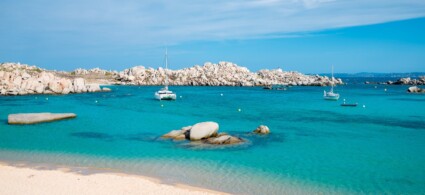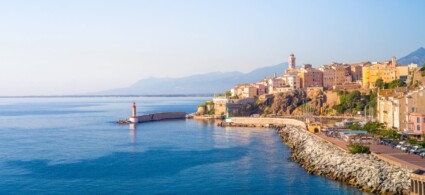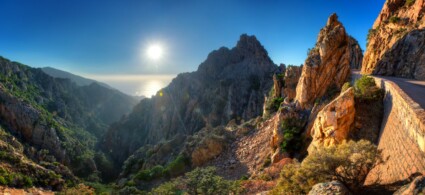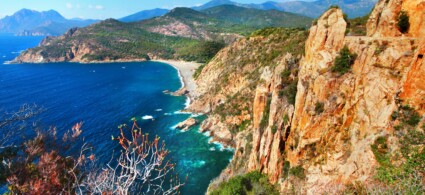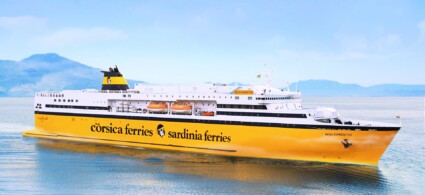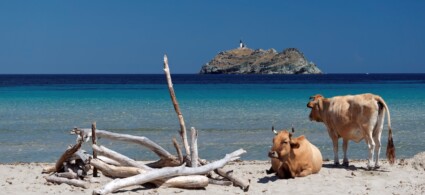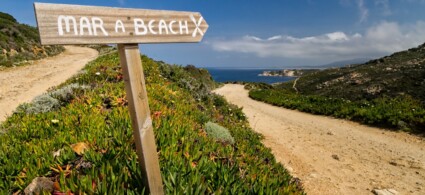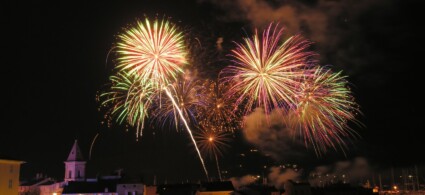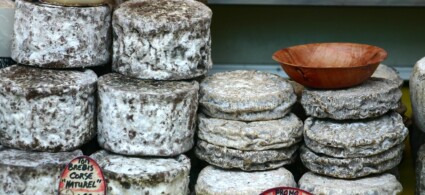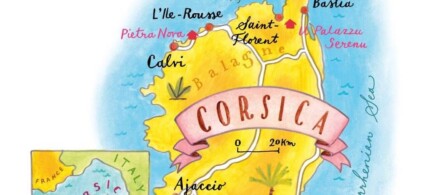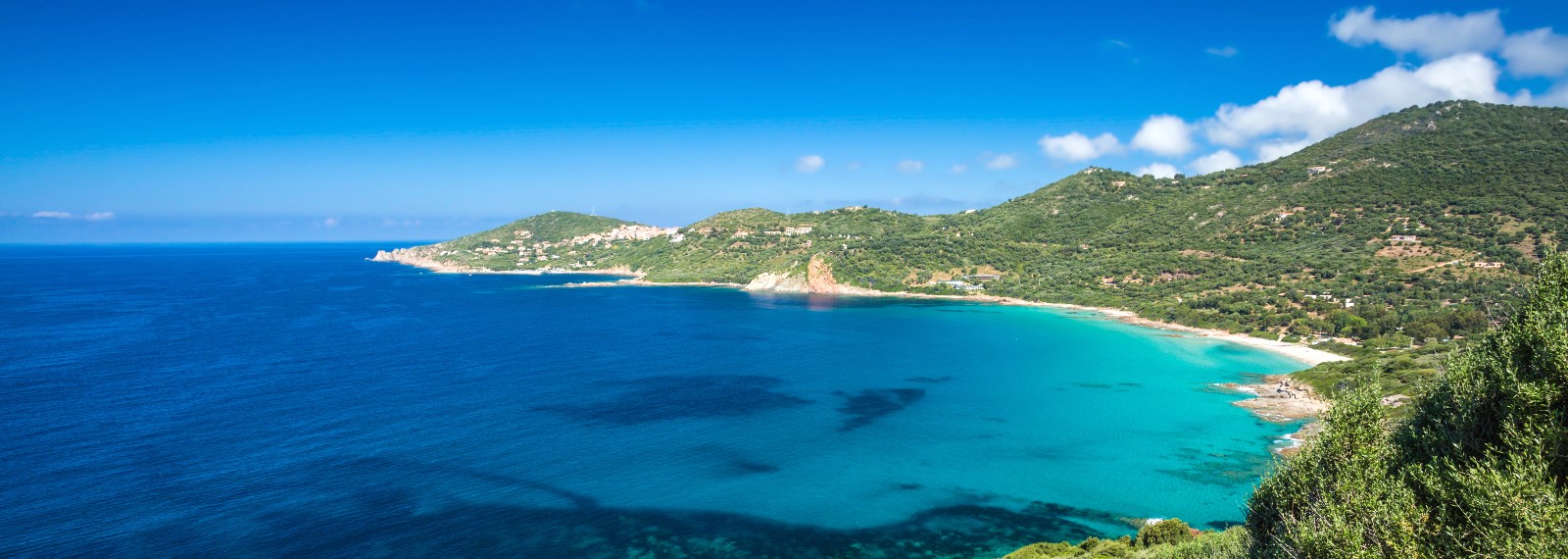

With its unspoilt and wild landscape, Corsica holds a variety of sights that will make you fall in love: Caribbean-coloured beaches, breathtaking cliffs, blindingly white cliffs and perched villages.
Corsica is an island surrounded by crystal-clear waters and dotted with beautiful sandy beaches, sheltered by lush hills, characterised by the famous, fragrant scrubland known as maquis. Beach resorts, bays and marinas are bustling with tourists throughout the summer, but the real Corsica is discovered in the mountainous interior.
Pine forests, woods but above all vineyards, from which an excellent, historic Corsican wine is made, delineate the island’s inland landscapes. In the villages, ancient traditions are still alive: cheerful and characteristic festivals, typical customs, the centuries-old local language called ‘corsu’ and the specialities of Corsican cuisine. Furthermore, in the mountains, which are snow-covered for most of the year, it is possible to go on exciting treks , such as the challenging but spectacular GR20 trail in the Parc Naturel Régional de Corse.
To organise your next holiday in Corsica, all you have to do is book a place on a ferry to Ajaccio or Bastia (unfortunately there are no direct flights), take your car with you or rent one on arrival, and set off to discover a land that is sure to leave you with lasting memories.
Crossing Corsica by car (or motorbike) is indeed the best, if not the only, way to discover this rugged yet bucolic land full of surprises. Help yourself with our interactive map to discover the most beautiful beaches and resorts and organise your trip to Corsica in the best possible way and before you leave, don’t forget to have a look at the weather forecast.
Thanks to its crystal-clear sea, Corsica is taken by storm in the summer season, from mid-July to the end of August. This leads to crowding of beaches, paths, roads and accommodation facilities, resulting in higher prices and crowds in the resorts.
At the same time, however, the pleasant climate makes the temperature ideal for holidaymakers, providing a warm sea, excellent for diving and water sports enthusiasts.
For those who have the opportunity to holiday out of season, we highly recommend the months of May-June and September-October, which boast the best conditions. In fact, in these periods the tourist influx is low, as are the prices of hotels and services, the welcome is certainly warmer and the temperatures are mild and pleasant, without having the exaggerated heat of full summer.
If, on the other hand, you wish to go to Corsica out of season, i.e. from November to Easter, we regret to inform you that most establishments are closed and the island is decidedly sparsely populated.
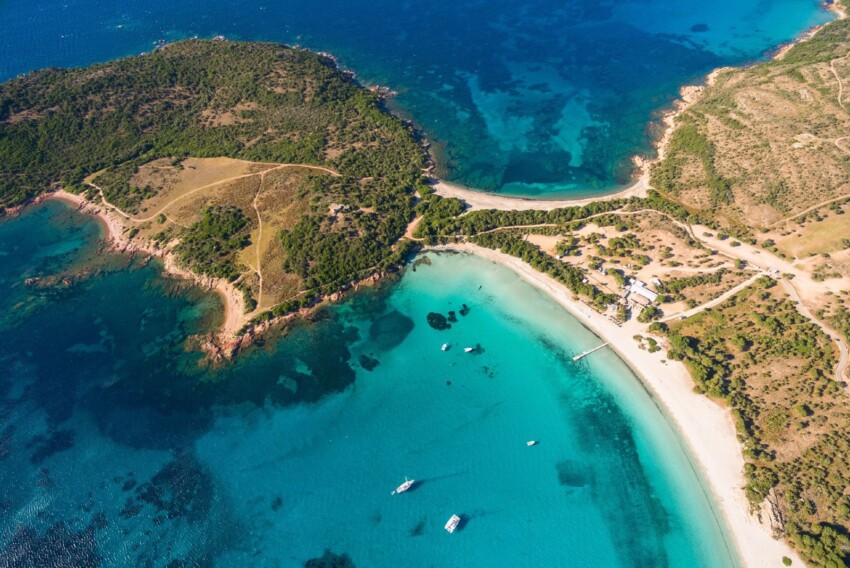
The island’s pride and joy are undoubtedly its beaches. Corsica boasts one of the best seas in Europe. Its paradisiacally coloured beaches have nothing to envy the Caribbean: crystal-clear turquoise sea, shallow and sloping seabed, fine white sand. All surrounded by wild Mediterranean maquis, most of which has remained unspoilt.
What are the most beautiful beaches in Corsica? The beach of Santa Giulia, with its turquoise lagoon is the jewel of the island, but the wild beach of Saleccia contends with it for the title of most beautiful beach. Not to be outdone are Palombaggia beach and Rondinara beach, corners of pure beauty with crystal-clear waters.
If, on the other hand, you love rocky landscapes, you will have to go a few kilometres from Porto: here the cliffs draw a breathtaking profile, 400 metres above the sea. A dreamlike, timeless panorama. Inaccessible by car, the Calanques de Piana can only be discovered by a steep walk through unspoilt nature or by sea.

Like a diamond in the rough set between the sea and the mountains, Corsica offers breathtaking sights. From the Scandola Nature Reserve, a UNESCO World Heritage Site, to the historic villages nestled in the hills, Corsica is full of must-see sights.
With more than 1,000 km of coastline and its Caribbean-coloured beaches, the island is a popular destination for tourists from all over Europe in search of sea, nature and relaxation in an unspoilt environment.
Because of its strategic position in the Mediterranean, for centuries Corsica was fought over by the Pisan and Genoese military powers, who took turns in ruling the island. Their presence can still be seen today in the architecture and conformation of its towns.
Bastia is a picturesque and cheerful town with an ancient harbour and a lively old centre: a walk inside the historic citadel is not to be missed, lingering in place Saint-Nicolas, boulevard Paoli, rue Campinchi and the Jardin Romieu.
Ajaccio ‘s Genoese quarter recounts the city’s past, which today boasts a cosmopolitan character, enlivened by the magnificent harbour and streets full of prestigious fashion boutiques. In Napoleon’s city, everything is dedicated to the emperor: several museums to visit, statues and parades, such as the concluding Fetes Napoliennes on 15 August.
The jewel of the island is the snow-white Bonifacio, a pretty town with a medieval atmosphere with its white cliffs and perched citadel. The Escalier du Roi d’Aragon, the steep descent from the cliff, overlooks the famous Mouths of Bonifacio, the strait between Corsica and Sardinia, from which there is a unique panorama of beauty.
Equally enchanting is Calvi, a medieval town of Genoese origin, which preserves intact a solid and charming fortified citadel overlooking a picturesque and colourful harbour.
Last but not least, we cannot forget Porto-Vecchio, a fortified village whose historic centre guards a maze of quaint, steep alleyways, where you can breathe in all the popular Corsican atmosphere alongside a lively marina full of evening life.
In addition to its dream beaches and charming towns, Corsica boasts natural landscapes of incredible beauty.
Among the must-see landscapes are the Calanques de Piana, rock formations that have been declared a Unesco World Heritage Site, the Agriates desert, which, despite its name, offers a landscape rich in Mediterranean scrubland that leads to beautiful beaches, Cap Corse, a peninsula that is almost a world apart where the mountains plunge into the sea, and, of course, the Scandola Natural Reserve, the island’s pride and joy.
Finally, it is impossible not to mention the inland mountains that offer exciting and extremely varied trails to all trekking enthusiasts, first and foremost the legendary GR 20, considered the most difficult hiking trail in Europe.
The island’s hinterland offers an exceptional panorama of steep mountains, Mediterranean maquis, ancient olive groves and perched villages. Here, time seems to have stood still and we recommend visiting some picturesque villages, especially those of Balagne, strolling through the shady squares, original meeting places for the elderly, and taking pictures of the most photogenic corners, such as fountains, wash-houses or ancient dwellings that now house craft workshops.
From labyrinthine Sartene to Lama, perched on a rocky spur, one of Corsica’s most beautiful villages, via Patrimonio, cradle of the island’s best vineyards, to Murato, surrounded by centuries-old chestnut groves.
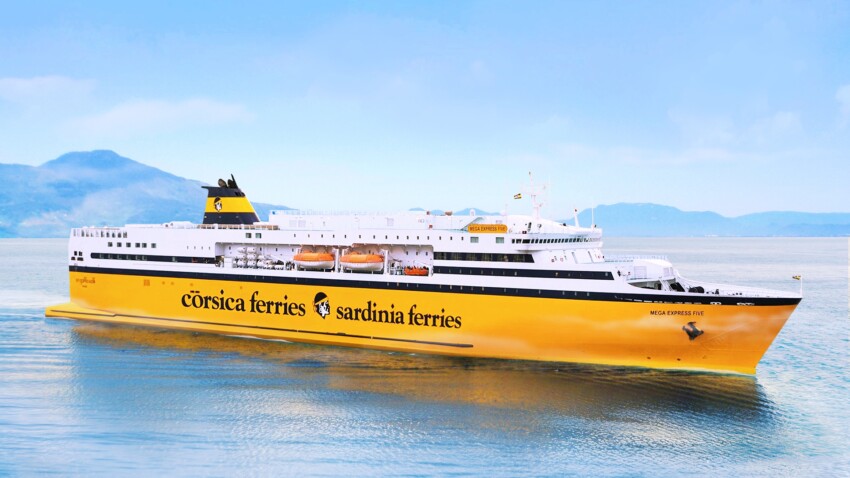
Most flights to Corsica depart from the French airports of Paris, Marseille and Nice, but there are also many direct flights from the United Kingdom and Germany.
Finally, although with a few routes, there are also direct flights to Corsica from Belgium, Denmark and Switzerland.
Alternatively, especially if you want to take your car/motorbike/camper with you, you should consider taking a ferry from the coast of France or northern Italy.
The island has six ports, located in the most important cities: Ajaccio, Bastia, Porto Vecchio, Ile Rousse, Propriano and Bonifacio.
Connections with the French ports are regular and daily, especially during the summer period, and are operated by 6 different shipping companies.
Ferries from mainland France to Corsica depart from Marseille, Nice and Toulon. Ferries from Italy are also numerous and depart from the ports of Genoa, Savona, Piombino, Livorno, Civitavecchia (Rome) and Naples, as well as Porto Torres and Santa Teresa di Gallura in Sardinia.
They are very spacious ships, capable of carrying about 2,000 passengers with 200/300 cars, equipped with comfortable cabins, bar and restaurant. Ticket prices are not exorbitant, but for travel in the most popular summer months of July and August, we recommend booking well in advance.
